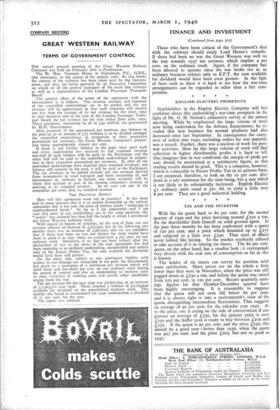TIN AND THE INVESTOR
With the tin quota back to 8o per cent. for the second quarter of 1940 and the price hovering around £250 a ton, the tin shareholder finds himself on solid ground again. In the past three months he has been confronted with a quota of 120 per cent. and a price which bounded up to £275 and relapsed to a little over £230. That state of affairs never looked like lasting. So the market resolutely refused to take account of it in valuing tin shares. The 8o per cent. quota, on the other hand, has a steadier look ; it corresponds very closely with the real rate of consumption so far as this is known.
The holder of tin shares can survey his position with some satisfaction. Share prices are on the whole ,a little lower than they were in November, when the price was still pegged down to £230 a ton, and before the quota was raised from 100 per cent. to 120 per cent. Recent quarterly earn- ings figures for that October-December quarter have been highly encouraging. It is reasonable to suppose that the quota will not soon fall below 8o per cent. and it is always right to take a twelvemonth's view of the quota, disregarding intermediate fluctuations. That suggests an average of 90 per cent. for the calendar year 1940. As to the price, one is erring on the side of conservatism if one guesses an average of £230, for the present price is over £250 and the buffer pool is ready to buy between £200 and £230. If the quota is 90 per cent. and the price £230, this should be a good year—better than 1936, when the quota was 921 per cent. and the price £205, but not so good as 1937.














































 Previous page
Previous page